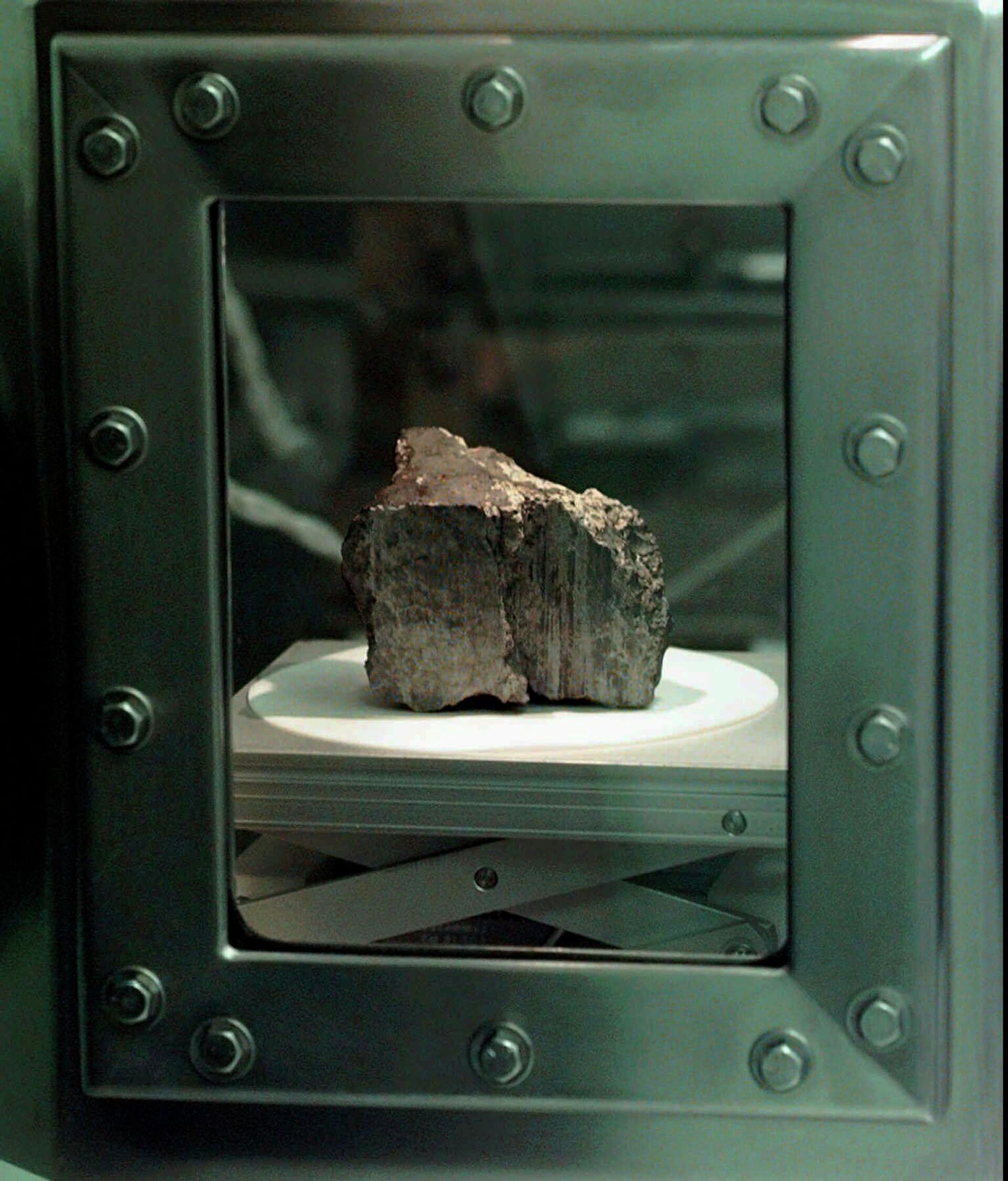Not So Fast! New Study Aims to Debunk 1996 Claims Martian Meteorite Had Signs of ‘Primitive Life’
Subscribe
A new study on a meteorite from Mars has overturned previous conclusions that marks on the rock were indicators that life once existed on the Red Planet. Instead, the group of scientists say, a non-biological process produced the organic chemicals on the rock.
In 1984, scientists in Antarctica found a 1.9 kilogram rock that chemical analysis determined was from Mars. The rock was judged to be just over 4 billion years old, but was only blasted off the Martian surface about 17 million years ago by a meteor impact. Then, about 13,000 years ago, the rock plummeted down to Earth, crashing into its southernmost continent.
However, this was no ordinary rock - or so NASA scientists believed. In 1996, they announced something incredible: the meteorite, designated "ALH 84001,” showed “evidence of primitive life on Early Mars,” as the title of their paper read.
According to their report, evidence included “detection of an apparently unique pattern of organic molecules, carbon compounds that are the basis of life. We also found several unusual mineral phases that are known products of primitive microscopic organisms on Earth.”
However, after giving the meteorite another look, a group of scientists say there might be another explanation.
"ALH 84001 is one of the most studied rocks, if not the most studied rock, we have," Andrew Steele, an astrobiologist and senior staff scientist at the Carnegie Institution for Science in Washington, DC, told Space.com on Thursday. "To find something new in the meteorite that opened the door to understanding the observations made over many years was very cool."

The meteorite labeled ALH84001 sits in a chamber at a Johnson Space Center lab in Houston, Aug. 7, 1996.
© AP Photo / DAVID J. PHILLIP
The team’s work, published Thursday in the journal Science, suggests that “abiotic” processes created the organic elements.
According to their analysis, the carbon-rich chemical compounds that previous scientists mistook for evidence of life were actually created by extremely salty water flowing over the rock for a long period of time. The same thing, they said, could be recreated here on Earth.
The processes are called serpentinization and carbonation: when volcanic rocks like the ALH 84001 meteorite chemically interact with moving water, the atoms in the water can interact with the iron or magnesium in the rocks, creating different chemicals over time. The properties of the water, such as acidity or saltiness, can change which chemicals are deposited.
However, some of the researchers who drew the original 1996 conclusions have stepped up to defend their findings.
“While the data presented incrementally adds to our knowledge of (the meteorite), the interpretation is hardly novel, nor is it supported by the research,” Kathie Thomas-Keprta and Simon Clemett, astro-material researchers at NASA’s Johnson Space Center in Houston, told the Associated Press.
“Unsupported speculation does nothing to resolve the conundrum surrounding the origin of organic matter” in the meteorite, they added.
Luckily, more recent investigation has gone right to the source: several unmanned missions on Mars are presently hunting for Martian water, as well as for places it once might’ve flowed, which scientists judge to be the most likely places to find evidence of ancient life.



